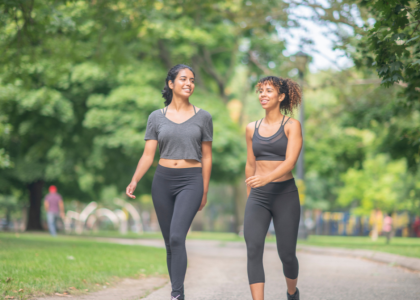How to Skip into Spring and Boost Your Wellbeing
Spring is here, mates, and it’s time to shake off the winter blues and get moving. And what better way to do that than with a bit of skipping?
Skipping is not just for kids, you know. It’s a fun and easy way to improve your fitness, health and mood. Plus, it’s cheap, portable and versatile. You can skip anywhere, anytime and with anyone.
Here are some of the benefits of skipping and how to get started:
Benefits of skipping
Skipping is a great exercise for your whole body and mind. Here are some of the benefits of skipping:
- It burns calories and fat. Skipping can burn up to 10 calories per minute, depending on your speed and intensity. That means you can burn 100 calories in just 10 minutes of skipping. That’s more than running, cycling or swimming.
- It strengthens your muscles and bones. Skipping works your legs, arms, shoulders, chest, back and core. It also helps to build bone density and prevent osteoporosis, especially in women.
- It improves your cardiovascular health. Skipping gets your heart rate up and improves your blood circulation. It also lowers your blood pressure and cholesterol levels, and reduces your risk of heart disease and stroke.
- It enhances your coordination and balance. Skipping requires you to coordinate your arms and legs, and to land on your toes. This improves your motor skills, agility and stability. It also helps to prevent falls and injuries.
- It boosts your mood and mental health. Skipping releases endorphins, the feel-good hormones, and reduces stress and anxiety. It also improves your concentration, memory and creativity.
How to get started
Skipping is easy to learn and do, but you need to have the right equipment and technique. Here are some tips to help you get started:
- Get a good skipping rope. You can find skipping ropes in most sports shops or online. Choose one that suits your height and preference. You can adjust the length of the rope by tying knots or cutting off the excess. To check the length, stand on the middle of the rope and pull the handles up. They should reach your armpits or slightly lower.
- Wear comfortable clothes and shoes. You don’t need any fancy gear to skip, but you do need to wear clothes that allow you to move freely and shoes that support your feet and ankles. Avoid skipping barefoot or in sandals, as you might hurt yourself or trip over the rope.
- Find a suitable place to skip. You can skip indoors or outdoors, as long as you have enough space and a flat surface. Avoid skipping on concrete, asphalt or grass, as they can damage your rope or cause you to slip. Opt for wooden, rubber or carpeted floors instead.
- Warm up before you skip. Skipping is a high-intensity exercise, so you need to warm up your muscles and joints before you start. Do some dynamic stretches, such as arm circles, leg swings, lunges and squats. You can also do some light skipping to get used to the rope and the rhythm.
- Skip with proper technique. Hold the handles of the rope loosely in your hands, and keep your elbows close to your sides. Rotate the rope with your wrists, not your arms. Keep your back straight, your chest up and your shoulders relaxed. Look ahead, not down. Jump with your feet together, and land on the balls of your feet. Don’t jump too high, just enough to clear the rope. Breathe normally, and don’t hold your breath.
- Vary your skipping routine. Skipping can get boring if you do the same thing over and over. To make it more fun and challenging, you can vary your skipping routine by changing the speed, intensity, duration and style of your skipping. You can also try different skipping tricks, such as crossing the rope, skipping backwards, skipping on one leg, skipping with high knees, skipping with double unders, etc. You can also skip to music, or skip with a partner or a group.






